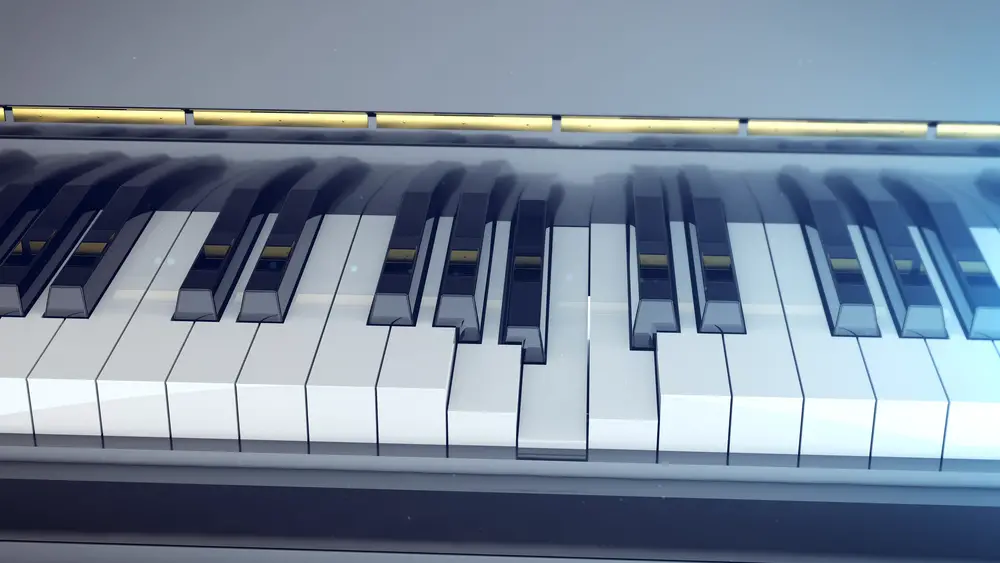
Playing the piano is one of the most pleasant experiences we can have. You can create beautiful melodies and rich harmonies with only your fingers.
Everything isn’t always peachy and smooth though.
One day, as you’re playing, something frightening happens.
A key is stuck, and it’s not coming back up.
What should you do next?
This article will share the most common reasons for sticking keys and how to fix sticky piano keys.
Quick NavigationWhy Do Keys Get Stuck?Bound By The KeyslipThings Getting Stuck Between The KeysObjects Stuck Under The KeysBushing IssueSwelling KeysSluggish PartsSticking Keys On Keyboards and Digital PianosSticking Keys On Uprights And GrandsCost Of A Piano Technician To Fix The ProblemHow To Know If A Key Is Broken Or StuckShould You Hire A Professional Or Do It Yourself?Conclusion
Why Do Keys Get Stuck?
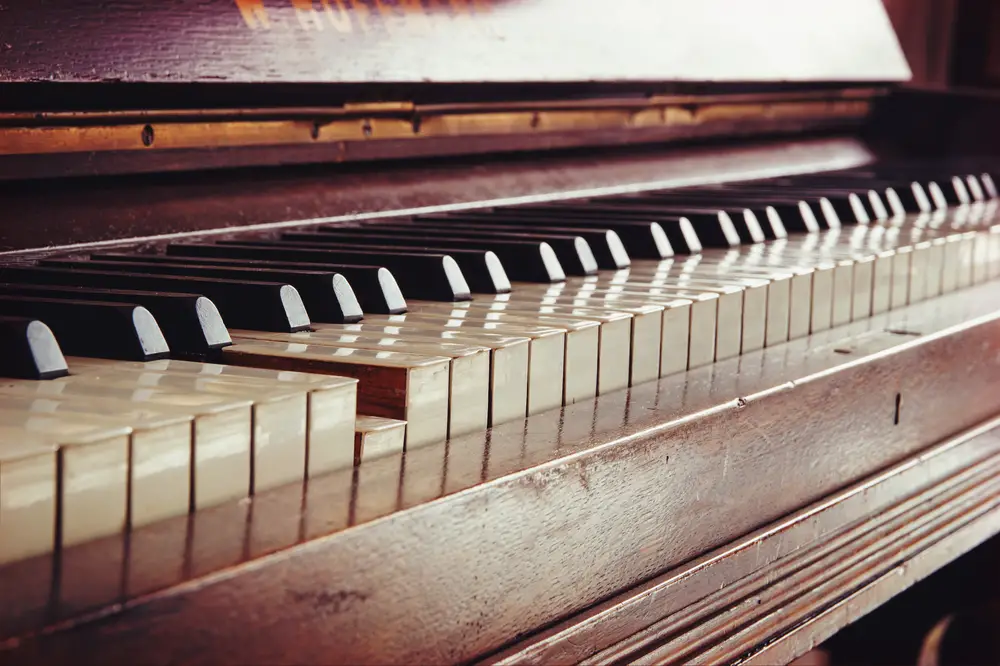
Keys can get stuck for a number of reasons. The root of the problem can be simple or a little more complex. Luckily, there’s always a fix, no matter the issue. Here are some ways keys can get stuck, from most common to least common.
Bound By The Keyslip
The keyslip is the visible piece of wood beneath the keys. This piece acts as a cover to protect the internal key mechanisms. Often, the keyslip warps or swells, causing it to be too close to the front of the keys. This problem is prevalent for people who live in humid climates.
Another reason for a keyslip issue is the player leaning into the piano. Some people have a habit of sitting too close to the instrument, which can bend the keyslip over time. The solution to this problem is to pull the keyslip forward with your hands. If this doesn’t work, you may have to loosen some screws beneath the keybed and put some cardboard shims between the end lock and the keyslip. You can easily create these shims by folding business cards in half. The primary goal is to create a space in between the keyslip and the keys.
Things Getting Stuck Between The Keys
Small objects like crumbs can get stuck between the keys and cause issues. Removing these objects may take a bit of finesse. The best way to go about it is to use a knife, paperclip, or another thin object.
Objects Stuck Under The Keys
If this happens, you’ll need to remove the lid, shelf, fallstrip, and fallboard. Use a screwdriver to remove all the necessary screws. It’s a good idea to label these screws to avoid misplacing them. After you’ve disassembled everything, look for something below the key. With one hand, firmly hold the back of the key. With the other hand, lift the front end of the key about a half-inch. Shake it a bit and then put it back into its normal position. After you alleviate the problem, reassemble the piano.
Bushing Issue
This problem is a little more complicated. You may not know that each key has two hidden holes. Metal pins run through these holes in the center and front of the key. The job of these pins is to keep the key in place as it goes up and down. Inside the holes, there is a small felt cloth, known as the bushing.
This bushing can expand and become imbalanced with humidity. The most efficient way to fix this problem is to hire a piano technician. They can remove the key and use a specialized tool to adjust the felt. Some pianos might even require complete removal of the bushing. In that case, you or a technician will carefully insert a new bushing back into the key.
Swelling Keys
Humidity can cause keys to swell over time. A white key might lean up against another, causing it to be unresponsive. To fix this, press down on the affected and adjacent key at the same time. While they’re both down, use a screwdriver to separate them and widen the gap. Make sure your screwdriver has a thin tip, so you don’t damage the keys.
Sluggish Parts
Each of the keys is connected to a jack flange, which connects to a hammer flange. The sticker and whippen raise when you press a key. The jack and hammer flanges have a center pin. If the pins get too tight, the result will be non-responsive keys. You or a piano technician will have to change the center pins.
Sticking Keys On Keyboards and Digital Pianos
Though it’s less common for a keyboard to have sticking keys, it still happens. The most common problem is a bend in the keys or something stuck in between them. If a key is bending slightly to the right or left, it might get caught on another. To mitigate this issue, press down on the stuck and adjacent key. When they’re both down, use a screwdriver to wedge them apart. If there’s something in between the keys, you’ll have to use a thin and long object like a paper clip or knife. In some cases, you can blow out the obstruction using canned air.
Sticking Keys On Uprights And Grands
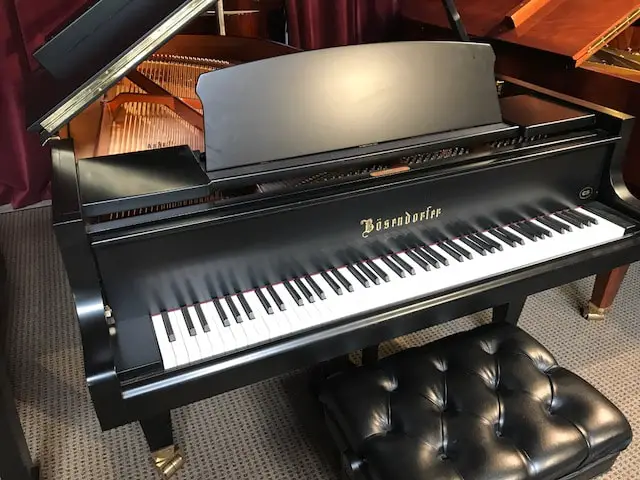
If a key sticks on an upright or grand piano, there’s good news and bad news—mostly good news. The bad news is that there are more working parts and possibilities of error. The good news is that you can easily access most of those parts. These pianos are also easier to disassemble than digital pianos and keyboards.
Cost Of A Piano Technician To Fix The Problem
A piano technician is always a safe and easy way to unstick a key. You might wonder, how much do they charge to fix this problem? The answer is anywhere from $10 to $80. If the problem resides in the keyslip, the cost will be lower. The more work that the technician has to do, the more it’ll cost. If you cannot identify the problem and have the extra money, it’s worth hiring a piano technician.
How To Know If A Key Is Broken Or Stuck
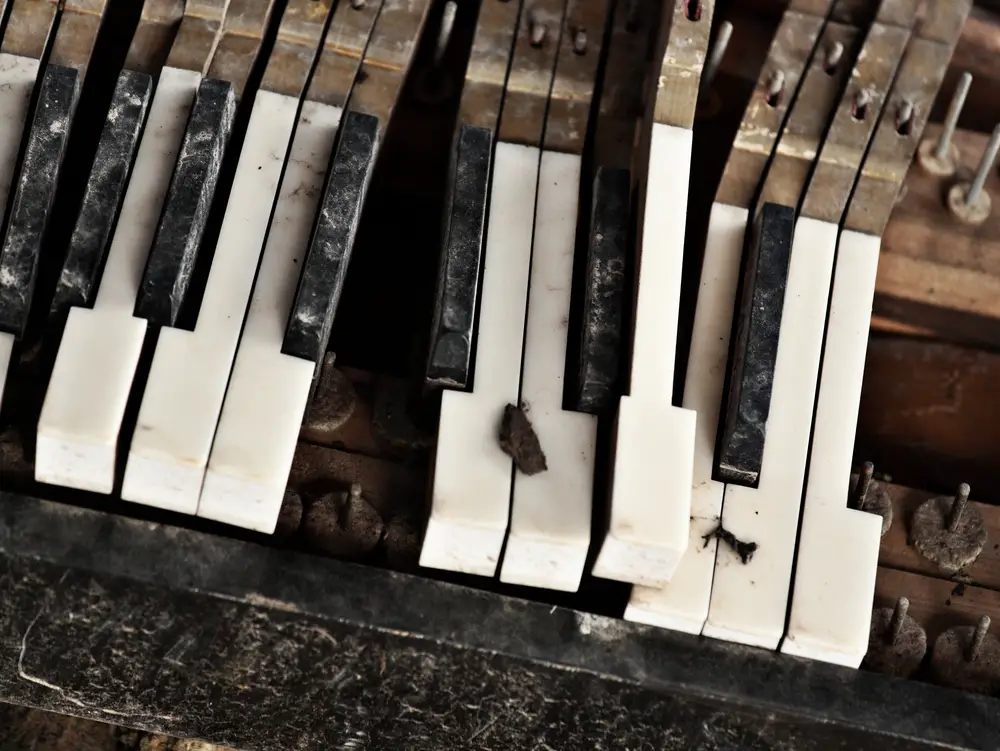
Since the problem will largely affect the time and effort, it’s good to determine whether a key is broken or stuck. Though the difference is subtle, there’s a simple test you can do. Lift up the stuck key to its normal position and see how it reacts when you take your hand off it. If the key falls back down, that’s an indicator that there’s a mechanical malfunction. However, if the key stays in the right position, that could mean that it’s stuck.
Should You Hire A Professional Or Do It Yourself?
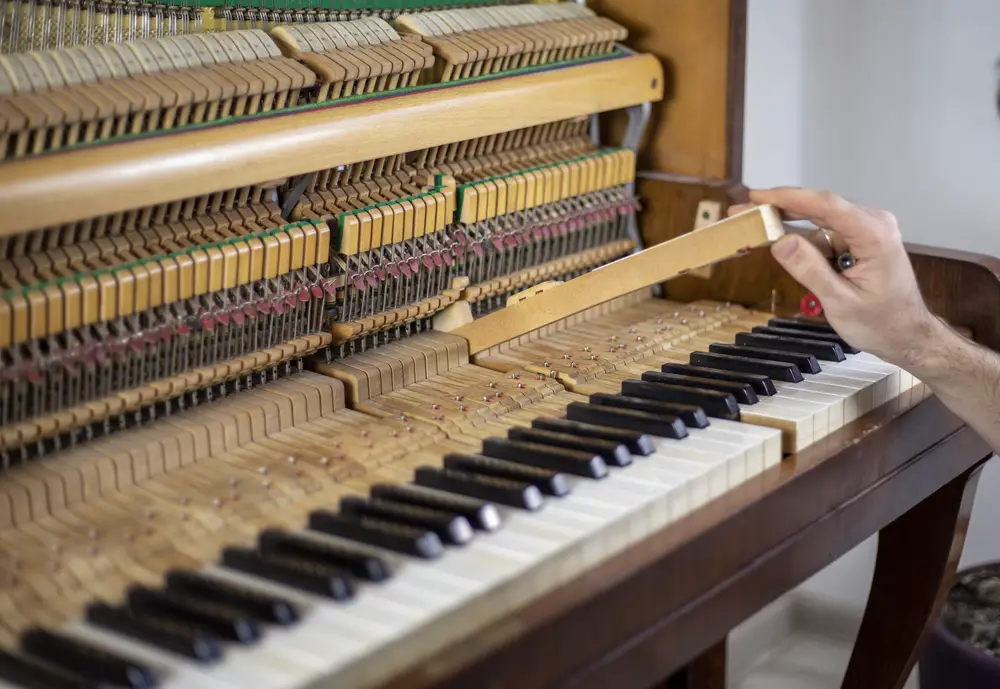
The bottom line is this: Do it yourself if it’s an easy-to-fix predicament. Some of these lighter issues involve the keyslip and obstructions between the keys. However, if the root of the problem is deeper, it’s probably best to hire a technician. They can quickly and efficiently fix the key with no worries about damaging it.
Conclusion
Having a stuck key is frustrating when you’re playing the piano. It’s all fun and games until the song requires the broken key. Fortunately, you can resolve the issue on your own most of the time. Follow the steps I provided in this article to fix your stuck key or keys. There’s no shame in hiring a piano technician if it’s necessary. Once the key is repaired, you’ll be a happy pianist once again.

